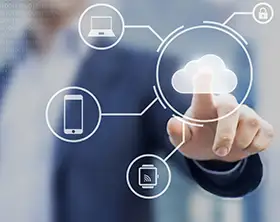The Top Forces Driving Digital Alignment
(This is the 1st article in a duo series covering "Digital Workplace" and "Digital Alignment" topics. Part 2 reveals the challenges to digital workplace & digital alignment).
In addition to COVID, generational, environmental, and work-life balance demands drive changes in how we work. In this article, we'll look closely at some of these forces.
Bob Dylan released his famous song "The Times They Are A-Changing" in 1964 and the lyrics still hold true today.
Come gather 'round people
Wherever you roam
And admit that the waters
Around you have grown
And accept it that soon
You'll be drenched to the bone
If your time to you is worth savin’
And you better start swimmin’
Or you'll sink like a stone
For the times they are a-changin'
His message is clear: changes are inevitable. Those who can adapt will flourish, and those who cannot will struggle in the long run.
What Does Digital Alignment Mean?
Let's briefly discuss the concept itself before analyzing its driving forces. This term literally means aligning technology to business needs. It is a match between the company's goals & values and its digital infrastructure. After the objectives have been clearly articulated, it's time to design and implement the digital infrastructure to support the chosen strategy.
Digitally aligned organizations outperform competitors by leveraging technology investment to their advantage. Their technology, talent, and processes are seamlessly blended to accomplish business objectives.
What drives organizations to be digitally aligned? What natural changes make companies reconsider their digitalization strategy and adopt new organizational approaches? Here are the top five reasons behind this process.
Driver #1: The Generational Changes in How We Work
I am a member of the baby boomer club and started my engineering career in 1980. My early career could be defined as fairly autocratic. Work occurred in a well-defined 9-to-5 work-in-the-office type model. All my job was done during working hours.
There was no interaction with colleagues and clients outside of my work shift. Everyone in our department had the opportunity to give their opinion, but the boss clearly held the final vote. We discussed common issues amongst ourselves and soliciting input from others outside our department was a "taboo." There were no cell phones, laptops, email, or the internet.
The only computers in the building belonged to the IT department. They were all IBM mainframes processing COBOL jobs in batches. I used to get a performance evaluation once a year. The training and re-skilling were very formal and expensive processes.
Analyzing the workforce’s generations, you can clearly see the difference in how older and younger professionals make decisions, learn, use technologies, and approach switching to other positions:
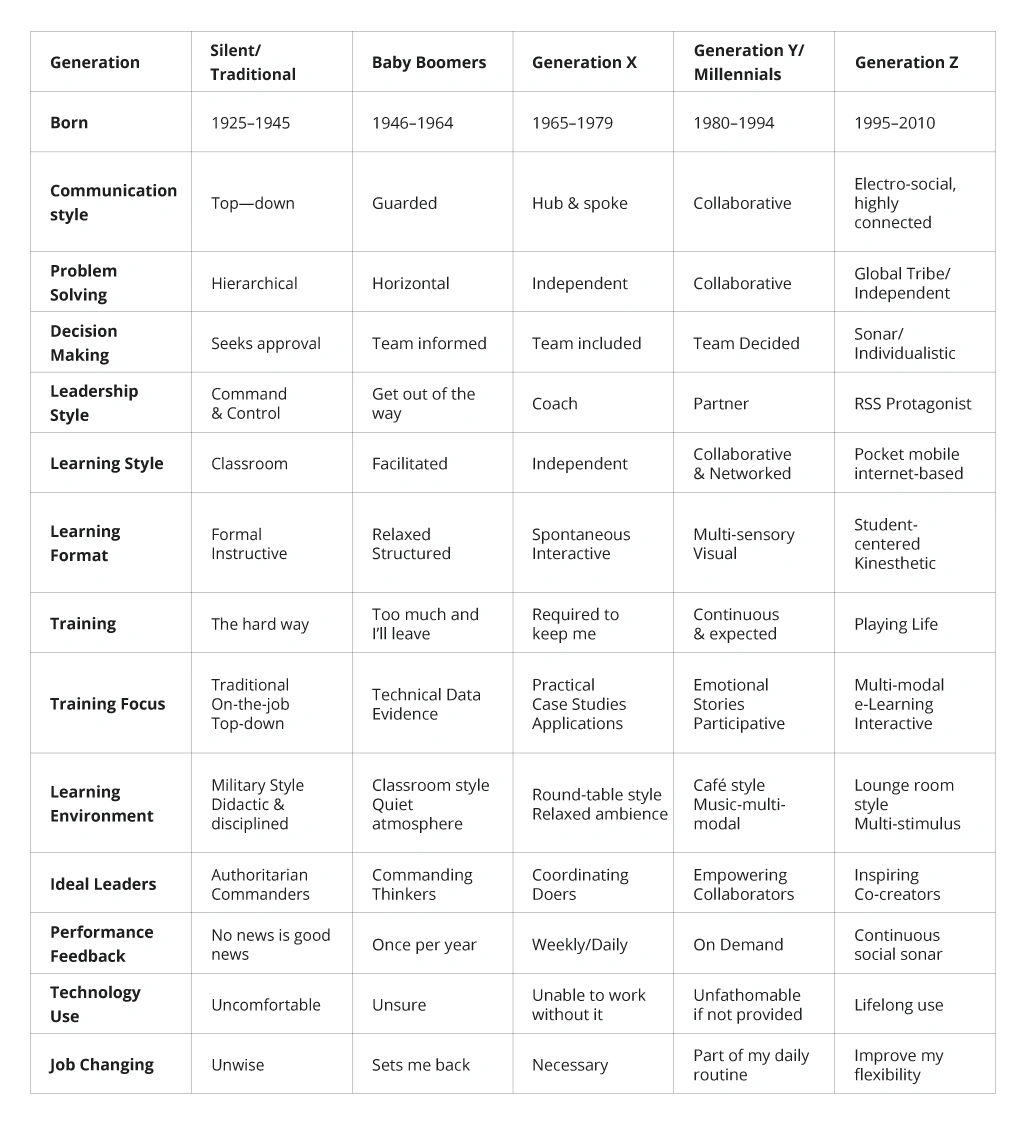
As you see from the table above, the expectations have changed significantly over the last 40+ years. Cell phones, laptops, and tablets are expected. Social networks, lifelong learning, the internet, and problem-solving that involves a whole team are the new normal. Feedback is common and cross-organizational. Changing jobs frequently is no longer considered a stigma as it relates to career growth. We are connected 24/7 now. Instant information is a key requirement, and the opinions of others help us make our decisions both at work and beyond.
Companies constantly seek technology alignment to perform with the highest possible productivity in an ever-changing workforce environment. At the same time, productivity directly depends on how comfortable employees feel about their work conditions and how motivated they are to perform effectively. Matching the business goals with the workforce’s expectations and creating favorable conditions for effective collaboration is one of the vital drivers for becoming a digitally aligned enterprise. The progress in achieving that match is directly visible in the generational changes to the work processes described above.
Cloud Infrastructure and Omni-Channel Communication Tools for Effective Remote Work
Driver #2: Prioritizing Health over Work
No one can deny that COVID-19 has significantly impacted the world. The chart below summarizes the current statistics according to the World Health Organization. With over 7.037 million lethal cases as of March 2024, it is not surprising that we have rethought the value of "our time in the office."
According to the recent survey results published in Microsoft's 2022 Work Trend Index, people from all over the world are more likely to prioritize their health and well-being over work:
The same survey showed that the two most popular reasons why employees quit were personal wellbeing or mental health (24%) and work-life balance (24%).
COVID made people rethink what is essential and prioritize health and well-being over pay. The digital alignment with the new normal comes two-way. The specialists got used to remote or hybrid work mode and found it optimal for supporting the desired lifestyle and personal well-being. On the other side, the companies also transformed their organizational and digital infrastructure by closing their office spaces and extending remote work and communication toolsets.
Driver #3: Work-Life Balance
The COVID crisis has undoubtedly shown us that being in the office "9 to 5 X 5 days a week" is no longer an essential ingredient to getting the job done. The brought the advantages that makes sense to preserve in the post-pandemic period. The time saved by not commuting gives us more opportunities to be with our families, pursue a hobby or reflect. Living close to the office is no longer required as we have become a truly mobile society. Workers can live in locations that best fit their lifestyles — urban, or rural. The choice is up to you now. The workforce has proven that the remote-only or hybrid employment models can work effectively given the proper amount of support. Convincing specialists that the full-time in-office model now required is futile. The recent report Randstad revealed exciting figures:
- 60% see their personal life as more important than their work life.
- 51% are happy to stay in a role they like even if having no room for progression.
- Wellbeing and mindfulness are the third most desired skills (23%) after artificial intelligence (23%) and IT & tech literacy (29%).
- Work-life balance is now ranked as highly as a reward on the lists of employees’ priorities (93% each).
- Notably, work-life balance is even more important (60%) than higher pay (59) when people consider their next career move.
The priorities have shifted towards finding a comfortable work-life balance and employers should count on this when competing for talent. Providing healthy and productive work conditions is one of the core digital alignment priorities.
Driver #4: Preserving the Environment
The world recognizes that the environment is in danger and that pollution cannot continue at the current rate. Although COVID is surely a tragic event for people, the reduction in traffic (land, sea, air) yielded a considerable decrease in air pollution. Below is a study that clearly shows the reduction in air pollutant emissions from the pre-pandemic period and during the lockdown:
The positive effect on the ecology is one of the benefits people would like to preserve and develop further. People are not ready to blindly return to how they lived and worked before COVID-19. In the IBM research, 93% of respondents said the pandemic has influenced their views on sustainability. 67% of respondents say they prefer applying for jobs from sustainable companies.
It all promotes finding a new balance between the company operation organization and the new values that acquire importance among professionals.
Driver #5: Flexibility in Office, Remote, and Hybrid Models
Being fully remote may not be a solution for everyone. Personal contact and interaction are still critical in doing business with internal and external customers. WFH Research reports that 59.1% of full-time employees work fully on site, 28.2% are in hybrid arrangement, and only 12.7% work fully from home.
The report by Owl Labs reveals interesting statistics:
While most employers (54%) mandate workers work in-office, this type of work is the least preferred among the latter.
- Employees prefer working hybrid (54%) or remote (26%).
- 35% of hybrid/remote employees would switch to a full-time office but start looking another job that offers hybrid.
- 29% hybrid/remote workers see no problem in switching to a full-time office, while another 29% state it would make them unhappy and not productive. 6% would just quit.
- 40% of workers consider not allowing for flexible working hours a top reason to reject a job offer.
Will the companies be capable of providing a flexible working mode to let specialists choose? A virtual workplace is one of the digital alignment tools for achieving such flexibility. With the tools to organize sustainable team communication and instant and secure access to all the corporate information, the organization can maintain different working modes simultaneously and let specialists choose.
To Sum up
Remote and hybrid work is no longer some sort of grand experiment in feasibility. The past few years have proven that the remote-hybrid scenario can not only work but promote professional growth, performance boost, and loyalty to an employer, given the right tools, work environment, and management support. The digital alignment between the changing environment and the company's organization is vital for achieving all those benefits.
Generational changes in how we work, the COVID pandemic, and a demand for a better work-life balance have forced us to reevaluate our next moves. Organizations that do not recognize these changes and react proactively will continue losing key talent in this ever-changing paradigm.
One last comment. The remote-hybrid business model is not necessarily a panacea. It still has its challenges that need to be resolved. We examined some of these challenges in the Part 2 article. Stay tuned!
![Digital Alignment Drivers [banner]](https://www.infopulse.com/uploads/media/banner-1920x528-the-top-forces-driving-digital-alignment.webp)

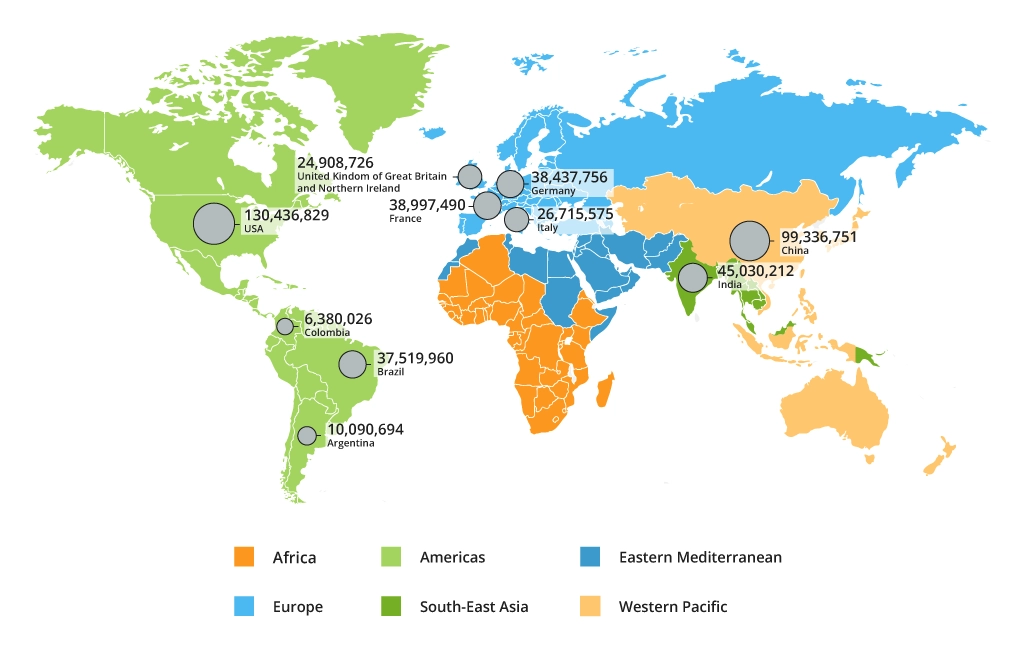
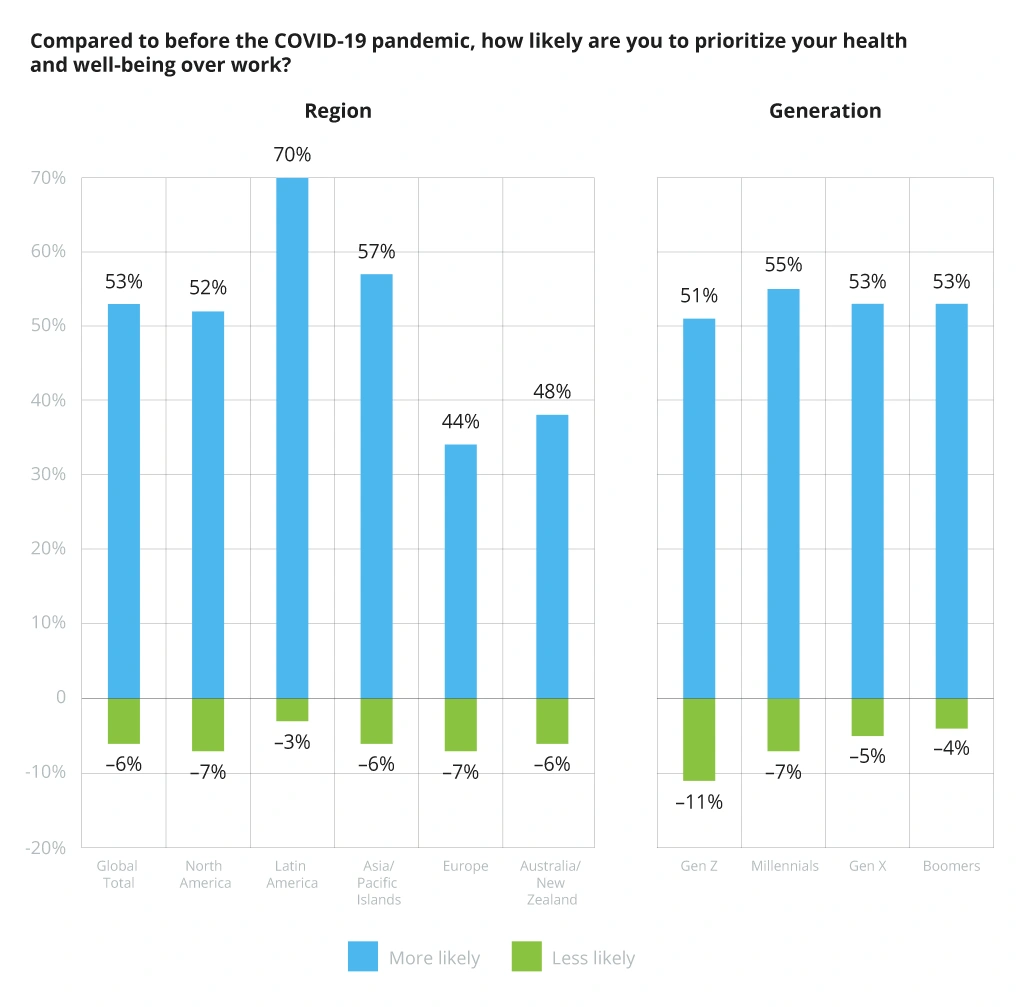

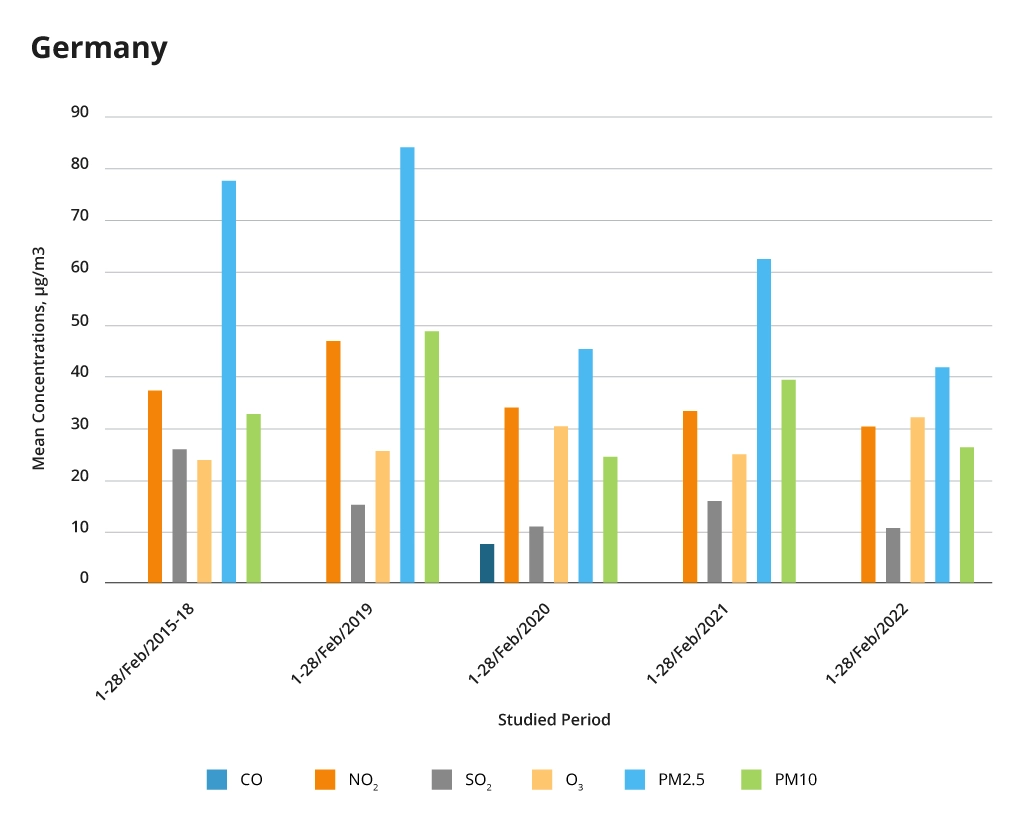

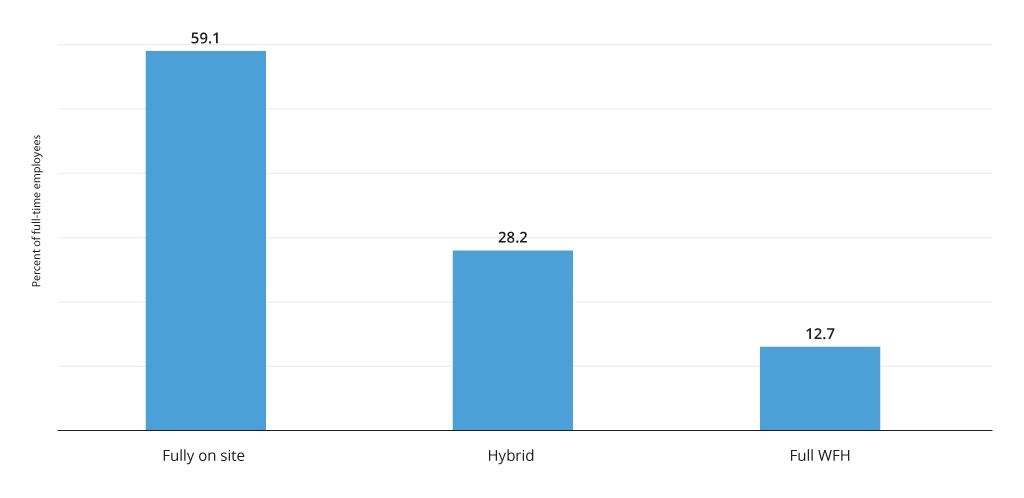
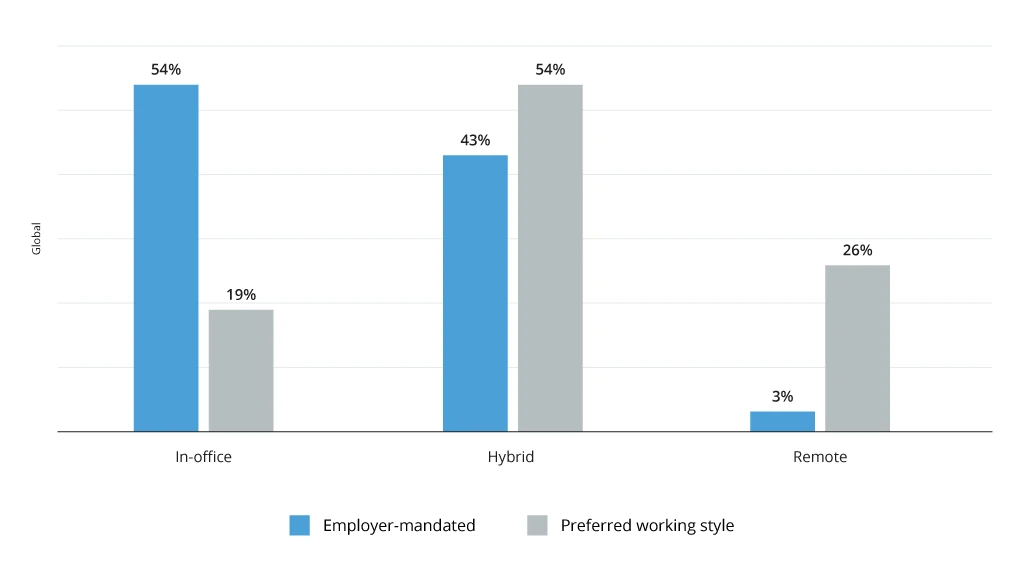
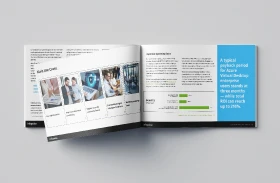

![Microservices Devil's Advocate [thumbnail]](/uploads/media/thumbnail-280x222-a-microservices-devil's-advocate-v2.0.webp)
![Microservices and DT [thumbnail]](/uploads/media/thumbnail-280x222-microservices-part-2.webp)
![Microservices and Digital Transformation: Intro [thumbnail]](/uploads/media/thumbnail-280x222-microservices-and-digital-alignment.webp)
![Digital Alignment Challenges [thumbnail]](/uploads/media/thumbnail-280x222-challenges-to-digital-alignment-and-digital-workplace.webp)




